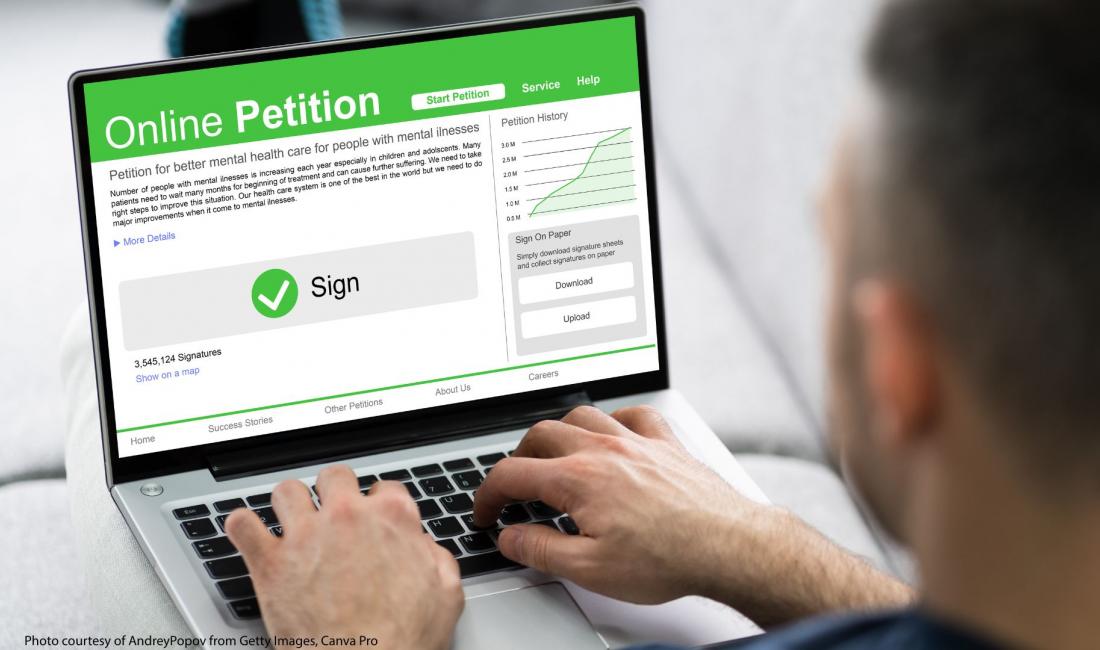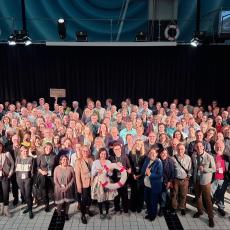Town halls are moving online, we are able to sign petitions from the comfort of our own homes, and collective action can suddenly start with a simple hashtag. Whether it is better connectivity, the ability to strengthen networks of activists all over the world or the possibility to scrutinise the actions of elected officials through digital tools - the promises that digitalisation holds for democracy and enhanced citizen participation are grand. But digitalisation can only deliver on these promises if it enables everyone to participate in (digital) democracy.
With the advent of digital technologies and social media, advocates of direct democracy and enhanced citizen participation were hopeful that these new tools would enable democratic participation in unprecedented ways.
Technologies have significantly lowered the barriers to entry: people can participate in collective action from their couch, join virtual protests or sign dozens of petitions covering a range of subjects from all over the world within mere minutes.
Previously cited barriers to political participation, like time constraints or physical accessibility barriers, have diminished, thereby allowing more and more people to voice their concerns, participate in collective action and contribute to democracy. Additionally, digital tools and particularly social media, enable the easier spread of information, thereby allowing people to learn about democracy-relevant happenings all over the world. This was exemplified during the Arab Spring, where social media platforms were key tools for mobilisation, raising awareness and communicating with citizens and the world.
Using digital technologies, hence allows people to get involved in collective action more easily by reducing previously existing barriers and by giving them easier access to information.
A compelling example of how this works in action is the work of Mein Grundeinkommen, a Berlin-based initiative that advocates for the introduction of a universal basic income. At the beginning of the COVID-19 pandemic, Mein Grundeinkommen (like other initiatives) was unable to continue its in-person activism. For this reason, the initiative decided to launch digital campaigns and virtual protests to raise awareness of the precarious situation of many people’s livelihoods and the need for economic security that were exacerbated by the pandemic. Tonia Merz, a fashion designer from Berlin, started a petition calling for the introduction of a universal basic income to protect people without a stable income during the pandemic. The petition quickly gained traction and got more than 400,000 signatures.
To capitalise on this success and to draw further attention to the petition and the debate on the universal basic income, the organiser used the Hashtag #GrundeinkommenJetzt (#universalbasicincomenow) for an entirely digital protest on X, formerly Twitter. Those who joined her tweeted to the Federal Ministry for Economic Affairs and Climate Change and the Ministry of Labour and Social Affairs, shared their stories and argued why they or others need the universal basic income now.
Digital technologies made all of this possible.
People were able to sign the petition, join the digital protest and directly address their elected representatives on social media. While initiatives like Mein Grundeinkommen highlight the potential for enhanced citizen participation, they also reveal the flipside of digitalisation:
Those who are unable to access or use these tools, whether due to economic constraints or knowledge gaps, were excluded from joining their co-citizens in advocating for the universal basic income.
While they might have been able to join in-person protests, the turn to digital tools threatens their ability to participate and actively shape the democracy that they live in. What about the people who do not know how to sign forms online? Those who do not own a smartphone or a computer? Those who are scared to use online platforms because they lack a basic understanding of online safety? Statistically speaking, these people are likely to belong to groups that are already marginalised. As of 2023, less than 30% of those aged 65+ in the EU have basic digital skills.
Similarly, people with no or low formal education present a huge gap in digital skills vis-à-vis people with high levels of formal education. Living in a rural area or having a lower income further raises the probability of not meeting the European Commission’s definition of basic digital skills.
While some people may have had an interest in signing the petition on the introduction of a universal basic income during COVID, may have wanted to join the digital protest or would have been able to share an important perspective or experience with their elected officials on X, their lack of basic digital skills may have prevented them from doing so. This means that, despite the petition being signed by an enormous number of people, certain perspectives remained hidden. Due to their inability to use the digitalised forms of democratic participation, people might have been excluded from participating in collective action.
As someone who is passionate about enhanced citizens’ participation, this risk of exclusion ought to be something to care about, something that needs to be changed.
If we want to uncover digitalisation’s full potential for enhanced citizens’ participation and democracy, we need to ensure that all people have equal access to the innovative tools and methods that digitalisation has given to citizens and activists.
So What Can We Do?
We need to advocate for conscious and targeted investments in the development of digital skills for the elderly, for people from rural regions, or for people with lower levels of formal education.
Investing in skills and creating tools that allow for meaningful participation of all people is needed to overcome the new barriers to participation that digitalisation can create. We should work towards deconstructing the idea that technology and digital tools are primarily something for men to be interested in. Digital literacy should take a more prominent role in educational institutions, whether it is in elementary schools or within the scope of educational offers for adults.
As organisers of collective action, we should consider how analogue options of participation can be upheld to allow people without basic digital skills to contribute. We can offer human support to those who are scared to fill in a form online. The opportunities for improvement are right there.
The digital era offers us a critical opportunity to reimagine democracy as something more participatory, inclusive, and responsive. Movements like Mein Grundeinkommen demonstrate how online activism can drive real political conversations and empower citizens beyond elections.
But without careful attention to digital inclusion, the same tools that promise enhanced participation could instead deepen inequality. As we continue to digitise our democratic institutions, we must ensure that everyone, not just the digitally literate and well-connected, can meaningfully engage.
Importantly, digital inclusion is not a novel concern; a variety of initiatives are already seeking to address this challenge.
One such example is the IDEU Project, which employs a crowdsourcing methodology through which citizens themselves articulate the challenges they face in digitalisation and contribute potential solutions. These insights are subsequently consolidated into policy recommendations for the European Commission.
Such initiatives highlight a crucial point: inclusive digitalisation is not simply a technical concern, but a necessary foundation for democratic participation itself. Without it, the promise of digital democracy cannot be realised; with it, citizens gain the means to engage, deliberate, and participate in society.
Inclusion is not a minor concern; it is a democratic imperative of our time.




